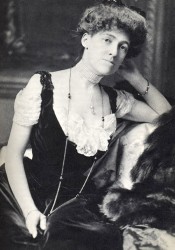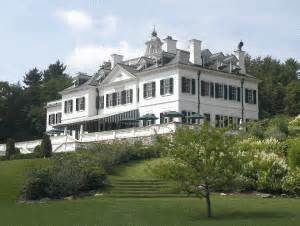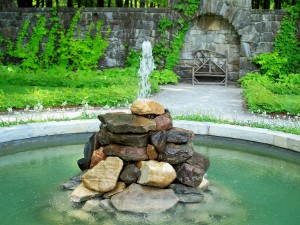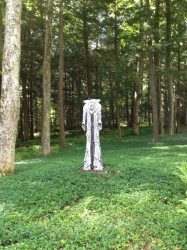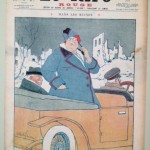Arts Feature: Celebrating The Mount, Edith Wharton’s Home in the Berkshires
The fall is an excellent time to visit the Mount, the splendid home author Edith Wharton built for herself in the Berkshires. The leaves have already begun to turn.
The Mount. At 2 Plunkett Street in Lenox, MA, Open daily 10 a.m.–5 p.m, $18 per person, with discounts offered to seniors, students, and active military.
By Helen Epstein
Writers like to visit the homes of writers they admire. In 1907, Henry James and Edith Wharton visited the home of George Sand. Now, many writers—particularly women—make similar pilgrimages to the home Edith Wharton had built for herself (with the aid of architects Franci Hoppin and Ogden Codman Jr.) at the turn of the twentieth century in the Berkshires. Wharton conceived of The Mount as her retreat from the social scenes of New York and Newport. It was where she wrote The House of Mirth, the novel that turned her into a bestselling author and Ethan Frome, the novella that generations of us read in high school. Henry James called The Mount “a delicate French chateau mirrored in a Massachusetts pond.” Wharton spent a productive and happy decade there, before moving to Paris and settling for the rest of her life in France. A prolific writer, she published over 40 books in 40 years and became the first woman admitted to the American Academy of Arts and Letters and the first woman to win the Pulitzer Prize for Fiction.
It’s been more than 25 years since Tina Packer first came upon the derelict mansion and decided to transform it into a home for the actors of Shakespeare & Company, and more than a decade since the Mount re-opened as a house museum. The Mount now hosts over 25,000 visitors annually, offering daily tours of the house and gardens, special exhibits, lectures, jazz, readings, and theatrical adaptations of Wharton’s work. It is one of only five percent of national historic landmarks dedicated to women. Right now—and through October 31—the woodlands are studded with sculpture from SculptureNow’s exhibit Confluence, with works by 25 artists.
Access to The Mount is on foot from the parking lot down a dirt road through acres of landscaped woodlands. “Decidedly, I’m a better landscape gardener than novelist,” Wharton wrote. “And this place, every line of which is my own work, far surpasses The House of Mirth.” Wharton had studied country homes and villas in England, France, and Italy before building her own, and she chose the location overlooking Laurel Lake and the Berkshire Hills with great care. The Mount was completed in 1902, incorporating the ideas she developed under the tutelage of Ogden Codman Jr., with whom she wrote her first book, The Decoration of Houses (1897). Italian Villas and Their Gardens, considered to be Wharton’s first travel book (1904), is a study of some 75 gardens. Her research informed her own French and Italian walled garden connected by a Linden Walk at the Mount.
If you are more interested in literature than in landscape, the very heady, 45-minute house tour begins in the small forecourt to the Mount where carriages and later motor cars pulled up over 100 years ago. These are often extraordinary tours where the comments of visiting English professors, feminist historians, architects, and interior designers often supplement the considerable knowledge of the well-read guides.
The Mount is radically different in size and style from typically grandiose and often dark “Berkshire Cottages of the Gilded Age,” such as Ventford Hall. Wharton’s light-filled, relatively modest residence has no portico, no grand staircase, no ballroom, and only four bedrooms. It was meant to be a retreat from society, where Wharton could do her work and entertain one or two intimate friends. Nonetheless, Wharton employed 10 servants inside the house and 10 more for the grounds and stables.
Wharton was born in 1862 into the Jones family of New York. When she died in 1937, the New York Times obit read “As a child she lived within the inner circle of New York society that always thought of itself as spelled with a capital S. In her ancestry was a long succession of important names. The Schermerhorns, the Joneses, Pendletons, Stevenses, Ledyards, Rhinelanders and Gallatins, who had led the social life of New York before Mrs. Astor’s horse was a symbol, before Commodore from Staten Island, or men with strange new names from the West had descended on the town. Her own father, although not overly rich, was, nevertheless, able to live, as she said, “a life of leisure and amiable hospitality.”
Although she had two older brothers, Edith Jones was raised as an only child who accompanied her parents to Europe. When she was 23, she married 35-year-old Teddy Wharton, from an equally socially prominent, Bostonian family. That marriage initially featured leisurely travel through Europe and socializing in Newport and New York, but by 1897 Wharton had withdrawn from her marriage and turned her energies to writing and building the Mount.
Wharton was a middle-aged woman when she planned the Mount and 40 when she moved in. Her ideas about the practical side of how she wanted to live as well as aesthetics remain striking. Constructed over 15 months in 1901 and 1902, the Mount is governed by laws of symmetry but also incorporates many then-new conveniences such as electric lights, a coal-burning furnace to supplement its many wood-burning fireplaces, and a hydraulic elevator to bring visitors’ trunks to the guest quarters on the third floor. Every room has two doors, some hidden, so that people can come and go without necessarily having to meet one another.
She envisaged the small entry hall as an elongated Italian grotto, with terra cotta tiles for the floor, arched ceilings and walls painted to resembled water-drenched moss. The hall leads to Teddy’s small den but before that to Wharton’s library whose built-in oak bookcases have been beautifully restored. They contain some 900 of her books, in the color-coded, leather bindings she favored to indicate author and subject. French doors open out from this room as well as the drawing and dining rooms to the stone terrace that runs the entire length of the house, now a pleasant café.
Although most of the furniture now at The Mount did not belong to Wharton and crude wall paintings take the place of original tapestries, the original fireplaces framed in Italian marble are intact as are the original floors. It’s fun to imagine the bright dining room with its small, round table for very small dinner parties or one-on-ones with special guests Henry James or Walter Berry, whom she credited with perfecting her prose style. Wharton liked to see and hear everyone she had invited to share a meal and not to miss out on any conversation. She disliked the way chandeliers and electric light colored women’s complexions and made a point of using candles and wall sconces.
Of most interest to Wharton’s readers is her suite upstairs. Here is the corner bedroom where she wrote every morning from 6 through 11 a.m. in bed, dropping page after page of The House of Mirth to the floor to be gathered up by her maid and sent to her typist in New York City. Although the furnishings are not the ones Wharton chose for herself but an educated guess, those who have seen Louisa May Alcott’s minuscule desk at Orchard House in Concord or Melville’s austere study in Pittsfield will be struck by the contrasts. The views from the windows are spectacular. The left wall looks out over her French garden; the wall opposite the bed, over the Berkshire Hills and Laurel Lake. Her suite includes a relatively modest bathroom (relative only to the Gilded Age) and the boudoir where she wrote letters and conducted interviews. This public and much photographed room is faithfully reproduced: on the mantelpiece of the fireplace are photographs of two men—not of her feckless lover Morton Fullerton but of her husband and Walter Berry, her oldest friend near whom she is buried in Versailles.
Most of the rest of the floor is devoted to an interesting temporary exhibit about Wharton in France during the First World War. As a probably bipolar Teddy Wharton Wharton indulged in buying binges and the couple became increasingly estranged, it became financially impossible to keep the Mount. Edith sold the building in 1911 and after 28 years of marriage, divorced and moved to the Rue de Varenne in Paris, a single woman with a private income.
Walter Berry, who had witnessed the German invasion of Belgium, got her involved in French war work as a volunteer. A temporary exhibit of historic documents and photographs is well worth seeing and includes many photographs and a New York Times Magazine article Wharton wrote about her war work as well as a caricature of the author in the French magazine Le Rire.
The fall is an excellent time to visit the Mount. The leaves have already begun to turn.
Helen Epstein is the author of six books of non-fiction including The Companies She Keeps, an early history of Shakespeare & Company in Lenox, MA. All her work can be found here.

